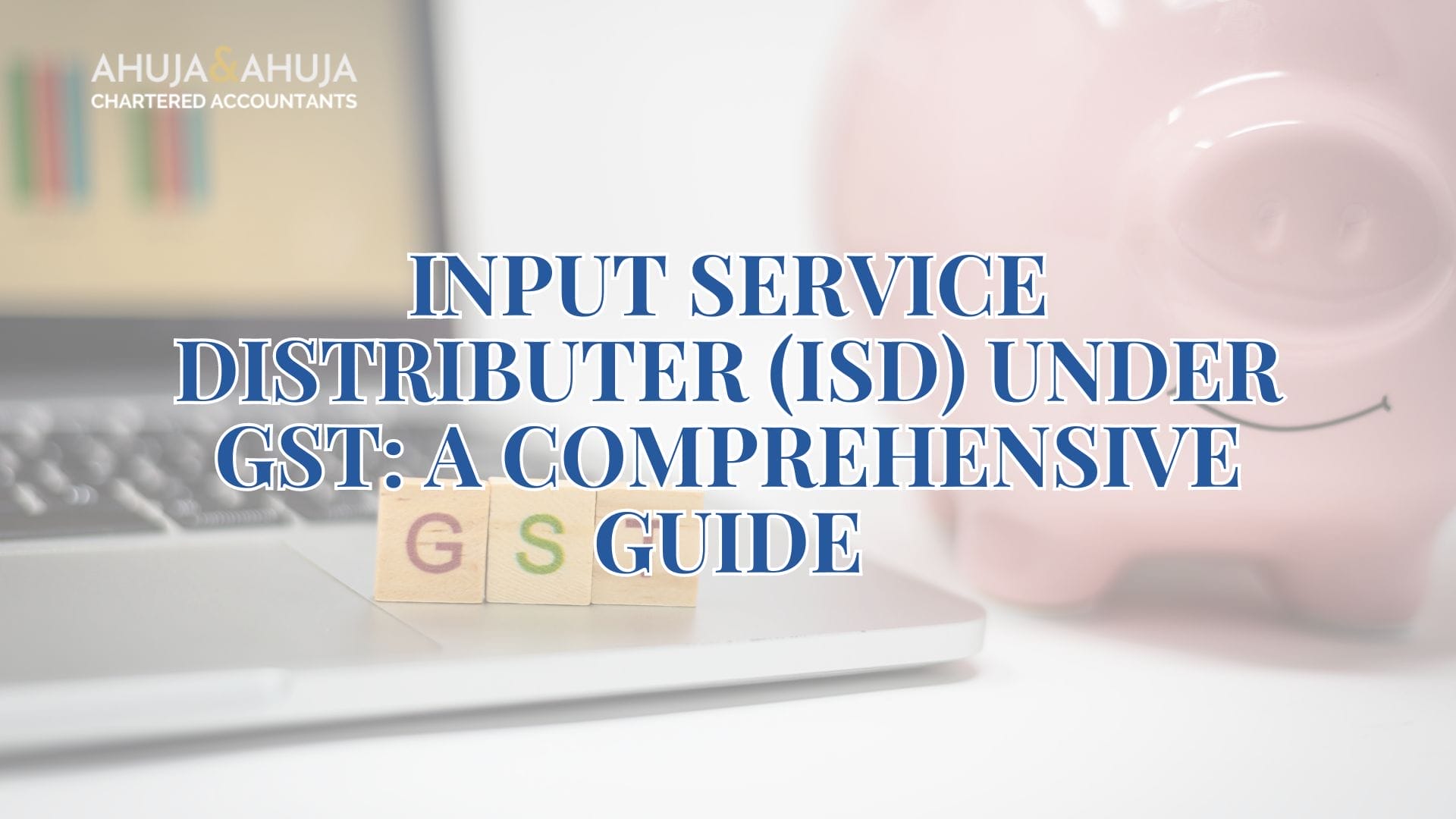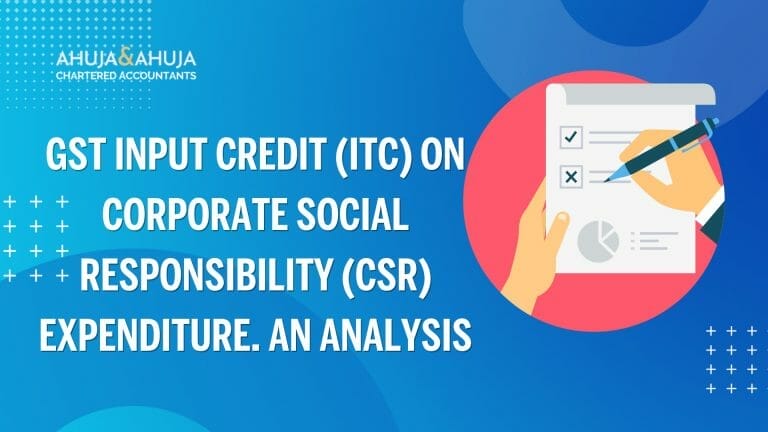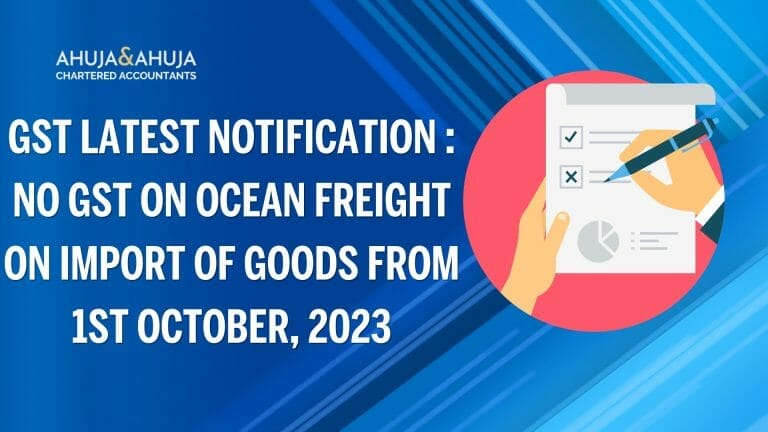Input Service Distributer (ISD) under GST: A Comprehensive Guide
The Goods and Services Tax (GST), introduced in India in 2017, has significantly streamlined the indirect tax system by incorporating a host of different taxes into a unified structure. Despite this simplification, the many nuances of the GST system can create questions, and sometimes confusion. Particular among them is one concept: the Input Service Distributor or ISD.
An ISD under the GST operates as a distinct entity, responsible for the distribution of Input Tax Credit (ITC) against the tax invoices for services utilized by its branches. They cater to units or branches with different GST Identification Numbers (GSTIN) but registered under the same Permanent Account Number (PAN).
The concept may seem complex at first, but once you understand its purpose and functioning, it becomes a useful tool for businesses to streamline their tax credit distribution.
ISD in the GST Regimen: A Detailed Analysis
An Input Service Distributor is a taxpayer who has GST registered branches. The ISD receives invoices for the services used by these branches. The tax paid for these services is the Input Tax Credit (ITC), which the ISD distributes to the corresponding branches on a proportional basis via issuing ISD invoices. The branches and the ISD may have different GSTIN, yet they share the same PAN.
ISD is not applicable in certain situations, however. For instance, the ISD cannot distribute the input tax credit in cases where the ITC is paid on inputs and capital goods, such as raw materials and machinery purchased. Furthermore, ITC cannot be disseminated to outsourced manufacturers or service providers.
If you’re a business with a substantial share of common expenditure, and billing or payment is conducted from a centralized location, registering as an ISD would indeed help simplify the credit-taking process for your entity.
Watch this space for the upcoming parts of this comprehensive guide where we will walk you through the registration procedure for ISD, dispatching tax credit, filing returns as an ISD, and other relevant aspects in more detail. In the meanwhile, explore the detailed tax services on offer that include GST Litigation, GST Audit, and GST Return Filing Services to navigate the GST landscape effectively.
Registration Procedure for ISD
To operate as an ISD, proper registration is essential. Apart from being registered as a normal taxpayer under GST, an Input Service Distributor must also register specifically as an ISD. Here is the step-by-step process for ISD registration:
Step 1: Access the GST portal
- Visit the official GST portal (www.gst.gov.in) and click on the “Register Now” button.
Step 2: Select the “New Registration” option
- Choose the “New Registration” option and select the “Taxpayer” option.
Step 3: Complete the required details
- Fill in all the necessary details, such as the legal name of the business, PAN, email address, and mobile number.
Step 4: Provide the Principal Place of Business
- Enter the address of the principal place of business for the ISD.
Step 5: Provide additional details
- Furnish details regarding the jurisdiction, nature of possession of the premises, and any additional places of business.
Step 6: Enter the authorized signatory details
- Provide the necessary information about the authorized signatory, including name, PAN, and mobile number.
Step 7: Verify the application
- Verify the application using the OTPs received on the provided email address and mobile number.
Step 8: Obtain the Application Reference Number (ARN)
- Upon successful verification, an Application Reference Number (ARN) will be generated and sent to the registered email address and mobile number.
It is crucial to note that the registration process may require additional documents or information depending on the specific circumstances of the business. Therefore, it is advisable to consult professionals offering GST Registration Services to ensure a smooth and hassle-free registration process.
Dispatching Tax Credit as an ISD
Once registered as an ISD, the important aspect is the distribution of tax credits to the respective branches. This is done through the issuance of ISD invoices. Let’s understand the process:
Role of Invoicing
- As an ISD, you need to issue ISD invoices to distribute the tax credit to your branches. These invoices should contain the following details:
- Name, address, and GSTIN of the ISD
- A consecutive serial number containing only alphabets and/or numerals, unique for a financial year
- Date of issue
- Name, address, and GSTIN of the recipient branch
- Description of the services
- Amount of the tax credit distributed
- The signature or digital signature of the invoice issuer
Breakdown of Tax Credit Distribution
- The distribution of tax credits by an ISD is subject to certain conditions:
- The tax credit distributed should not exceed the tax credit available with the ISD at the end of a relevant month.
- The distribution of tax credit should be filed in GSTR-6 by the 13th day of the succeeding month.
- The ISD can obtain information about the ITC from the GSTR-2B return.
- The recipient branches can view the tax credit distributed by the ISD in GSTR-6A, which is auto-populated from the supplier’s return.
- The recipient branches can claim the tax credit by declaring it in GSTR-3B.
- It is important to note that ISD entities are not required to file annual returns in Form GSTR-9.
Restrictions in the Distribution of ITC
- There are certain restrictions on the distribution of Input Tax Credit by an ISD:
- The credit of tax paid under the reverse charge mechanism is not available for distribution to the recipients. The ISD must utilize such credit as a normal taxpayer.
- The tax credit of CGST, IGST, and SGST shall be distributed based on specific criteria:
- Tax credit available against any specific input services used entirely by one recipient can be allocated only to that recipient.
- Tax credit available against input services used commonly by multiple recipients of the ISD shall be allocated to those recipients on a proportionate basis in the ratio of their turnover during the year.
- Tax credit available against input services used commonly by all the recipients of the ISD shall be allocated to all the recipients on a proportionate basis in the ratio of their turnover during the year.
Stay tuned for the next parts of this comprehensive guide, where we will cover topics such as filing returns as an ISD, constraints on input tax credit distribution, recovery procedures for wrongful distribution of credit by ISD, and frequently asked questions.
If you need assistance with GST compliance or further clarifications, consider consulting experts in GST Litigation Services or GST Consultancy Services.
Filing Returns as an ISD
Filing returns is an important aspect of GST compliance for an Input Service Distributor. Here is a breakdown of the process:
GSTR-6 Return
- An ISD is required to file the GSTR-6 return by the 13th of each month following the month for which the return is being filed.
- The GSTR-6 return is used to furnish the details of tax credit distribution to the recipients along with other relevant information.
- It should include details such as the name and GSTIN of the ISD, the period for which the return is being filed, and the total amount of input tax credit distributed.
GSTR-2B and GSTR-6A
- The ISD can obtain the information of Input Tax Credit (ITC) from the GSTR-2B return, which consists of details of inward supplies as per the information furnished by the suppliers.
- The recipient branches can view the tax credit distributed by the ISD in the GSTR-6A, which is auto-populated from the supplier’s return.
Recipient’s Claim of Tax Credit
- The recipient branch can claim the tax credit distributed by the ISD by declaring it in their GSTR-3B return.
- The recipient should ensure that they have received the ISD invoice from the ISD for the respective tax period before claiming the tax credit.
Annual Returns
- As an ISD, it is important to note that you are not required to file annual returns in Form GSTR-9.
Distribution Constraints on Input Tax Credit (ITC)
While an Input Service Distributor (ISD) plays a crucial role in distributing input tax credit to its branches, there are certain constraints and limitations to be aware of. Let’s explore them:
Specific Input Services
- When an input service is used entirely by one recipient branch, the tax credit available for that specific input service can only be allocated to that particular recipient. It cannot be distributed to other branches.
Common Input Services
- In cases where input services are used commonly by multiple recipient branches, the tax credit available for those input services should be allocated to the branches on a proportionate basis. The allocation is determined by the ratio of the turnover of all the operational branches during the year.
Credit for All Recipient Branches
- When input services are used commonly by all the recipient branches of the ISD, the tax credit available for those input services should be allocated to all the branches on a proportionate basis. Again, this allocation is based on the ratio of the turnover of all the branches that are operational during the year.
Restrictions on Reverse Charge Mechanism
- The credit of tax paid under the reverse charge mechanism cannot be distributed to the recipient branches by the ISD. Any such credit must be utilized by the ISD as a normal taxpayer.
By adhering to these constraints and distributing the input tax credit appropriately, an ISD ensures that the tax credits are allocated correctly based on the utilization of input services by the recipient branches.
Recovery Procedure for Wrongful Distribution of Credit by ISD
In the event of a wrongful distribution of tax credit by an Input Service Distributor (ISD), the GST Act provides for a recovery procedure. Here’s an overview of the process:
Deemed Inappropriate Distribution
- The GST Act deems the following instances as inappropriate distribution of tax credit by an ISD:
- Distribution of credit to any or all recipients in excess of the available amount for distribution.
- Distribution of credit in an inappropriate ratio to any or all recipients.
- Distribution of credit in excess of what a supplier is entitled to.
Recovery from Recipient(s)
- In such cases, the excess distributed tax credit is to be recovered from the recipient(s) by the ISD.
- This recovery includes the principal amount along with applicable interest.
Application of Demand and Recovery Provisions
- The provisions of ‘Demand and Recovery’ under the GST Act are applicable to effect the recovery.
- These provisions ensure that the excess tax credit distributed by the ISD is recovered from the recipient(s) in a lawful manner.
It is crucial for ISDs to exercise caution and comply with the guidelines to avoid any wrongful distribution of tax credit. By doing so, they can maintain proper accounting practices and ensure the rightful allocation of input tax credit to the respective recipient branches.
Frequently Asked Questions (FAQs)
Can an ISD distribute tax credit to branches with different GSTIN?
Yes, an ISD can distribute tax credit to branches with different GST Identification Numbers (GSTIN) as long as they are registered under the same Permanent Account Number (PAN).
How do businesses benefit from ISD registration?
ISD registration benefits businesses with multiple branches by allowing centralized distribution of input tax credit. This simplifies the process of claiming and utilizing credits, streamlining their tax compliance efforts.
How is the tax credit split across branches?
The tax credit is split based on specific rules depending on the nature of the input services used. If an input service is used entirely by one recipient, the tax credit is allocated solely to that recipient. If input services are used commonly by multiple recipients, the credit is distributed on a proportionate basis according to the turnover of the branches.
These are just a few frequently asked questions that businesses often have regarding the Input Service Distributor under the GST regime. It is important to consult professionals in GST Consultancy Services or GST Litigation Services for specific queries and tailored advice.
We hope this comprehensive guide has helped clarify the key aspects of ISD and its role in the distribution of input tax credit. Should you have any further questions or require additional assistance, feel free to reach out to experts in GST compliance.
Disclaimer
The materials provided herein are solely for educational and informational purposes. No attorney/professional-client relationship is created when you access or use the site or the materials. The information presented on this site does not constitute legal or professional advice and should not be relied upon for such purposes or used as a substitute for professional or legal advice.







